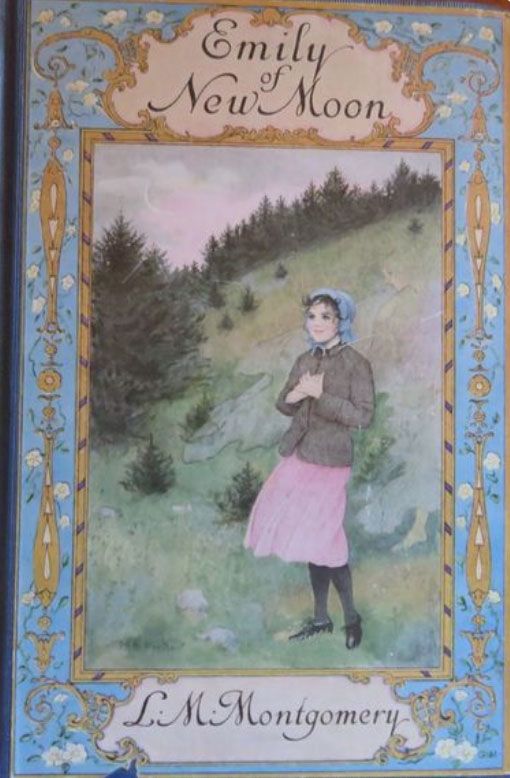

Emily of New Moon devotees celebrate feminism and fanfic as Anne of Green Gables’ literary ‘cousin’ hits 100
Anne Shirley – the joyful, imaginative redhead of Green Gables fame – has long held a special place in young readers’ hearts; but now her less famous literary ‘cousin’ is enjoying a belated moment in the sun.
Just over 100 years ago, the Canadian author, Lucy Maud Montgomery, having achieved international renown with the classic children’s novel Anne of Green Gables, introduced a new character to her fans. The book in question, Emily of New Moon, was more demanding than the ‘Anne’ series, and its protagonist, Emily Byrd Starr, was more nuanced and complex. Perhaps for that reason, the novel, though successful, never achieved quite the same prominence as Anne of Green Gables.
A century later, however, many children’s literature experts believe that Emily’s legacy has proven just as enduring, if not more so. When the BBC published a list of the “100 most inspiring novels” in 2019, Emily of New Moon was among its books “that chart the joy and jeopardy of youth”. Equally, Emily, rather than Anne, is often cited as having inspired a subsequent generation of female Canadian writers, including Margaret Atwood and Alice Munro.

The influence of Emily of New Moon as a landmark of children’s literature has been discussed by various academics, but much of their work is difficult to find. To mark the centenary of the three-part Emily series, a new book has compiled new scholarship on Montgomery’s ‘other’ heroine. It explores, among other themes, Emily of New Moon as an early example of feminist youth literature and how it anticipates modern fan fiction. L M Montgomery’s Emily of New Moon: A Children’s Classic at 100, was co-edited by Dr Joe Sutliff Sanders, an Associate Professor at the Faculty of Education, University of Cambridge, UK; and his student, Dr Yan Du, whose recent thesis on girl writers in classic and contemporary adolescent fiction covers Montgomery’s work.
“I first read Anne of Green Gables as a secondary school student in China, but none of us knew the Emily series existed,” Yan Du said. “It wasn’t until I came to Cambridge and Joe recommended the books to me that I discovered her.”
“As soon as I read it, I knew it was worthy of deeper exploration. It is such a rich novel, and it speaks to my own academic interest in why girls are often so much more engaged with writing than boys: why they generally engage more in the world of words. Emily epitomises that type of young woman.”
Emily is the work of a much more confident author. The book demands a much bigger commitment from readers.
Emily of New Moon was published in 1923 and follows Emily Byrd Starr, an orphan growing up in Prince Edward Island, Canada. Emily is sent to live at New Moon Farm with her aunts, Elizabeth and Laura Murray, and her cousin, Jimmy, following her father’s death. She is a gifted writer, and the series explores her friendships and relationships as well as her progress to becoming a published author.
Although the novel’s prominence pales in comparison with Anne of Green Gables, it has never been out of print, was made into a CBC television series in the late 1990s, and subsequently inspired a Japanese anime series.
It was published 15 years after Anne of Green Gables and marked a metaphorical line in the sand for Montgomery. “Anne was Montgomery’s first novel, a huge international success that launched her career,” Sanders, a specialist in children’s literature, said. “Emily is the work of a much more confident author. At times, Montgomery sets up ideas that don’t pay off for hundreds of pages. The book demands a much bigger commitment from her readers.”
Emily also takes on more challenging themes. While Anne marks the high point of the sentimental “orphan girl” stories that were wildly popular during the late 19th and early 20th centuries, Emily provided a more sophisticated perspective on what it meant to be a modern woman.
Yan Du notes the independence of voice that Emily exerts through her writing, and links this to Montgomery’s own writing practices, which blend conservative formulas with less conspicuous, subversive undertones.
In some ways, she suggests, the book represents a wider transitional moment in Canadian women’s history. “It is at once both very old and very contemporary,” she said. “Emily doesn’t necessarily challenge her aunts’ conservative outlook on life, but she does have a feminist understanding of her own future. She doesn’t want to get married, settle down, or have a family – she wants to make her own way as a writer. That sent out a powerful message to young readers of the period, and it is why it inspired a lot of women writers who read it as children.”
When I was younger, I was very much a fan of Anne.
These days, I am more an Emily person.
Yan Du has also studied how the Emily series challenged traditional literary norms through its use of what we now understand as fan fiction: writing which is based on, and develops, existing works. The novels feature numerous cases of Emily writing “fannishly”: reworking the endings of poems, performing and adapting excerpts from Shakespeare, or imagining the lives of characters and historical figures she has read about beyond the books themselves.
Like today’s fan fiction writers, this becomes a pathway through which Emily challenges certain traditional values and norms, and it asserts her own independence and identity. This, Yan Du suggests, echoes the ‘alt. writing’ of modern-day fanfic authors, which repurposes existing work to challenge mainstream values and foreground marginalised voices.
Such features perhaps account for the series’ lasting impact, even if Emily Byrd Starr’s influence has been a slower burning affair than Anne’s.
Sanders stresses that comparing the two creates a false opposition. But he added: “I think among fans of L M Montgomery you do find two communities: Emily people and Anne people.” Yan Du agrees. “When I was younger, I was very much a fan of Anne,” she said. “These days, I am much more an Emily person.”
LM Montgomery’s Emily of New Moon is published by the University Press of Mississippi.
Image in this story:
Detail from the cover of the first edition of ‘Emily of New Moon’, by L M Montgomery. Public domain image from Wikimedia Commons.
